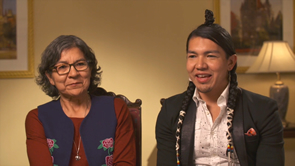
Patricia and James Makokis - Chapter 19: Practising "the Good
Way of Life" from the Hospital Bed to Mother Earth
Indigenous peoples in Canada lived healthy lives long before colonization—although as James Makokis points out in a recent video interview with the NCCIH, Western medicine tends to ignore the rich, complex, and effective forms of traditional medicine practiced for eons before the arrival of Europeans. James Makokis, along with his mother Patricia Makokis, is one of ten authors interviewed in these videos featuring some of the voices from the highly-acclaimed book Determinants of Indigenous Peoples’ Health in Canada: Beyond the Social, released in August 2015.
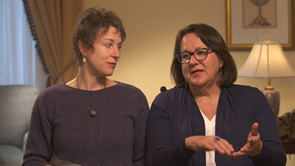
Margo Greenwood and Sarah de Leeuw - Introduction:
Rethinking Determinants of Indigenous Peoples'
Health in Canada
In their interview, editors Sarah de Leeuw and Margo Greenwood explain that the goal of this unique publication—the only book of its kind in Canada—was to privilege the deep, complex knowledge of Indigenous scholars, artists, community organizers, Elders, and health providers about the myriad determinants of health that affect their communities. With a significant majority of Indigenous contributors, Indigenous voices and ways of knowing are embodied in the text, providing a unique window into Indigenous knowledge about health from a variety of different perspectives.
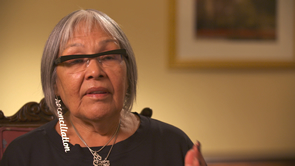
Madeleine Dion Stout - Chapter 13: Ascribed Health and
Wellness, Achieved Health and Wellness:
Shifting the Paradigm
Contributor Madeleine Dion Stout describes a process of transformation in the health of Indigenous people in Canada as they move from a system of health that is ascribed, or imposed—and, since colonization has been marked by severe disparities—towards a state of optimal, achieved health based on Indigenous ways of knowing and being. Along the way towards this ultimate goal, assisted health is based on the urgent need to “do something” to transform the realities of tremendous health challenges currently experienced by disproportionate numbers of Indigenous people. Non-Indigenous people and organizations involved in this transformation must be informed and respectful of the cultural differences and unique needs of Indigenous peoples.
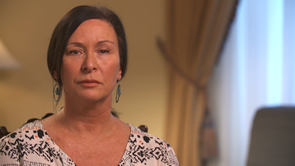
Charlotte Loppie - Chapter 1: Structural Determinants
of Aboriginal Peoples' Health
Charlotte Loppie’s explanation of the structural elements of health disparities helps provide a framework for understanding why health inequities persist despite decades of well-intentioned policies and programs that have aimed to address the chronic illnesses and health issues faced by many Indigenous communities. She uses the metaphor of a tree to explain how three separate but interdependent components of society work together to shape and structure the context of health outcomes. In her metaphor, the root system of the tree refers to the deep and often unseen foundations that shape the visible outcomes we refer to as health disparities. These systems include political, social, economic, and historical structures that influence the core, or trunk, in her metaphor—a reference to the moving parts or relationships that form systems of care and political/social dynamics, including the characterization of Indigenous people and the dominant discourses within health systems that influence the conditions in which people live. The crown of the tree, or the branches and leaves, represent the visible outcomes of the other elements combined.
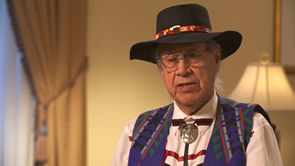
Albert Marshall - Chapter 2:
Two-Eyed Seeing in Medicine
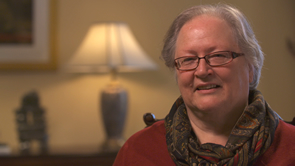
Shirley Tagalik - Chapter 3: Inuit Knowledge Systems,
Elders, and Determinants of Health: Harmony,
Balance, and the role of Holistic Thinking
All of the contributors interviewed in this video series share a common concern with improving the health of Indigenous peoples in Canada and beyond. In sharing First Nations, Métis, and Inuit traditional knowledge alongside Western academic and medical knowledge, the authors demonstrate the potential gains of walking in two worlds, integrating the best of both Indigenous and Western knowledge, and honouring and respecting the diverse healing and medical practices available to us today. Mikm’aw Elder Albert Marshall calls this the practice of “Two-Eyed Seeing”—emphasizing the need to preserve ancient, traditional knowledge so that it can be used not only to heal the cultural starvation experienced by generations of Indigenous people subjected to residential schooling and destruction of their language and culture, but to benefit all people. As Shirley Tagalik comments, Indigenous knowledge about health and healing has resonance beyond Indigenous communities: “It’s just a good way to live.”
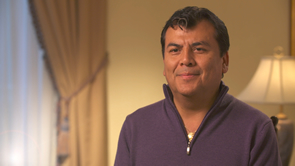
Warner Adam - Chapter 15: Reshaping the Politics of
Health: A Personal Perspective
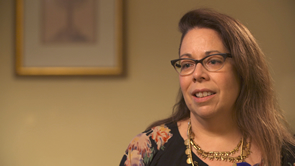
Brenda Macdougall - Chapter 18: Knowing Who You Are:
Family History and Aboriginal Determinants of Health
Two other speakers round out our video author interviews. Warner Adam, a member of the Lake Babine First Nation and Chief Executive Officer of the Carrier Sekani Family Services, talks about how his experiences of living next to a white settlement provided him with the opportunity to walk in both white and Indigenous worlds. This shaped who he is today and his strong conviction that First Nations need to manage, control, and design their own health programs and services if there is to be any improvement in the health of their citizens. Finally, Brenda Macdougall, Chair of Métis research at the University of Ottawa, emphasizes the importance of sharing narratives about the power of families for repairing the circle of family and restoring Métis identity, which is critical in the rebuilding of healthy citizens and healthy nations.
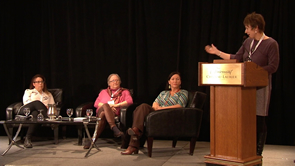
The interview series wraps up with the
“Beyond the Social Panel” from the NCCIH National Forum
”Transforming our Realities” held Dec. 2-3, 2015 in
Ottawa, Ontario. The panel includes Brenda Macdougall,
Shirley Tagalik, Charlotte Loppie, and Sarah de Leeuw.
Without a doubt, the wisdom and knowledge presented in this book has resonated with many people, including post-secondary instructors and students across diverse disciplines of study, from education to health to geography. In fact, demand for the book as a teaching and learning resource has been so overwhelming that the NCCIH, in collaboration with the publisher, is developing a teaching resource that will be available to provide questions for reflection/discussion and additional resources to enhance classroom learning on the complex, diverse, and important determinants of health for Indigenous peoples in Canada and beyond.